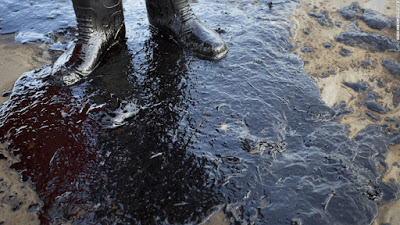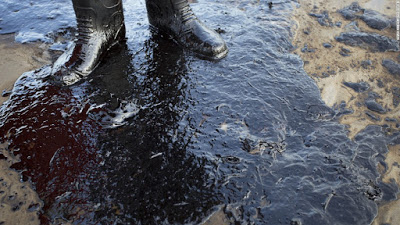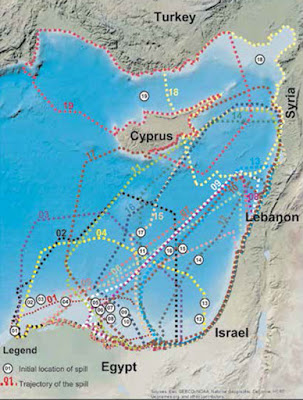The coasts of Cyprus will be affected in the event of an oil spill either due to hydrocarbon detection work, or by another accident, at 19 points at sea, according to a scientific publication in the scientific journal "NATURE Index".
According to the research prepared by the oceanographer at the Oceanographic Center of the University of Cyprus, Dr. George Zodiatis and his associates, due to sea currents and winds, will mainly affect areas of Larnaca and Famagusta up to Karpasia.
Potential oil spills will affect Cyprus if caused in parts of the EEZ of Cyprus, Egypt, Syria, Lebanon and of course Cyprus. Due to their proximity, the coasts of Cyprus will be more easily affected by possible oil spills in the EEZs of Cyprus and Israel. The same will happen, according to Dr. Zodiatis, if an oil spill is created by any leak of oil tankers while sailing in the areas located at the 19 points.
According to Mr. Zodiatis, in the last 10 years, seven large-scale maritime accidents have been recorded in the Eastern Mediterranean region and more than 1000 smaller incidents have been detected through satellite systems. The above data make, according to Mr. Zodiatis, extremely necessary to take measures, so as to protect on the one hand the marine environment of the region and on the other hand the human structures in the wider coastal area.
Dr. Zodiatis stated that in the context of the scientific publication, a combined oceanographic and geological simulation is presented for 19 possible accident sites, distributed in the EEZs of Egypt, Israel, Lebanon, Syria and Cyprus. The locations of the simulations were chosen after mainly taking into account the hydrocarbon extraction sites. In the framework of the study that was carried out, depth, meteorological, oceanographic and geomorphological data were analyzed and based on these, a prediction was made for the possible movement of the oil slicks, which are determined mainly to the east and northeast.
As far as Cyprus is concerned, its southeastern part (Larnaca, Famagusta, Karpasia) is more vulnerable.
According to Mr. Zodiatis, the oil slicks, in case they are created, are expected to hit the shores in a period of 1 to 20 days, depending on the location of the accident and the action of winds, sea currents and waves. As he explained, for the first time in the context of a study, the direction of movement of oil slicks is related to the morphology of the seabed.
The scientific publication in question proposes that immediate measures be taken to deal with the phenomenon (ie from the first hours of the oil spill) after the maritime accident and before the wind and sea currents sweep the oil slicks in the adjacent coastal areas.
According to Mr. Zodiatis, these measures should be defined:
a) At national level (updating of existing maritime accident plans by the competent authorities).
b) With cooperation protocols between neighboring countries.
c) With agreements at international level.
Predicting the spread of oil spills proposed in this work is considered to be a valuable tool in the response plans prepared by the civil protection services.
Hydrocarbons have also raised concerns
Mr. Zodiatis stated that the activity of hydrocarbon mining companies gave rise to the study of the possible effects on the coasts of Cyprus and in the environment in general. It is noted that in case the coasts of Cyprus are affected, the tourism industry will be affected as well (depending on the size of the leak).
The result of the publication (in the scientific journal in which the study was published under the title "Multidisciplinary oil spill modeling to protect coastal communities and the environment of the Eastern Mediterranean Sea") is the result of international and multiannual cooperation of researchers from Cyprus, Greece and the United Kingdom. developed under EU-funded research programs.
It is noted that in the period 1977-2013 in the Eastern Mediterranean more than 73 oil spills have been recorded, which, however, did not affect Cyprus to a significant degree.
The eastern part of the Levantine basin is generally considered vulnerable, while in addition to Cyprus, Israel and Lebanon are expected to be affected.
What the map shows
19 points have been recorded on the map which may leak oil and create oil slicks, which will affect the coasts of Cyprus. Each number, in a circle, also identifies the "suspicious" point of possible leakage. On the coasts of Cyprus (mainly from Larnaca to Apostolos Andreas) the oil spills will reach between one and 20 days. The time of approach of the shores by the oil slices will depend on the distance, the sea currents, the winds, etc.
During the 20 days, it is proposed to take action from the first hours.
Source: Liberal


